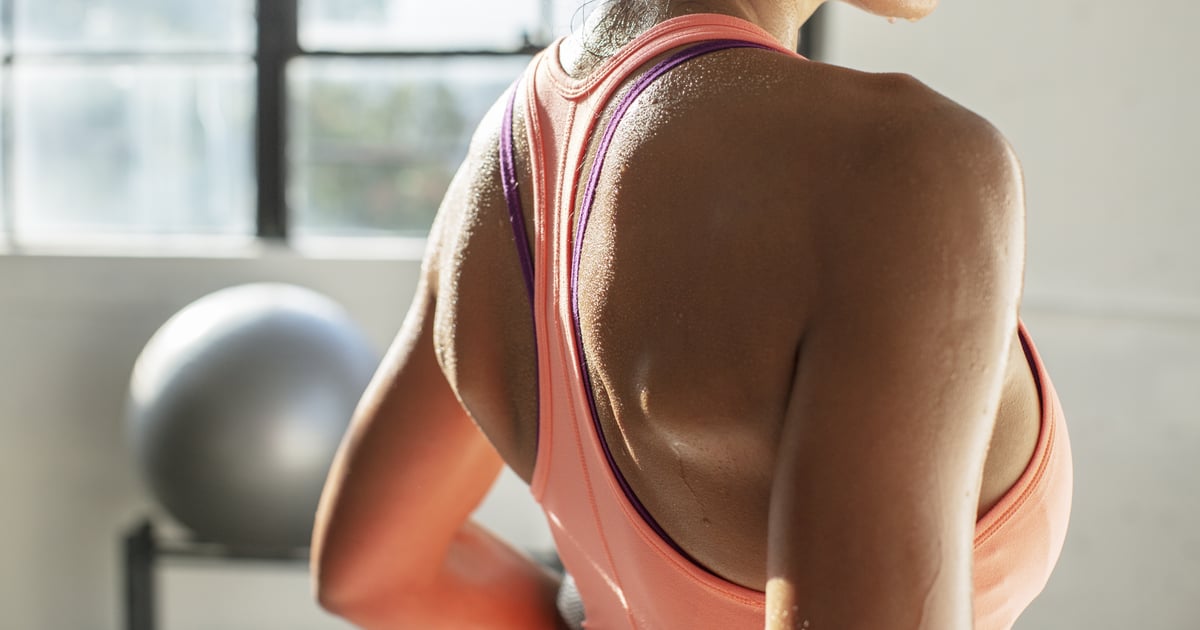
Working out is supposed to be good for you — and a great sports bra can make you feel good about yourself and push you to work out that much harder. But news from the Center for Environmental Health (CEH) is making people question whether their sportswear might have an unwanted impact on their health.
The Center for Environmental Health (CEH) conducted a variety of tests on branded sportswear and found high levels of BPA, an industrial chemical used to make some plastics.
BPA exposure “is a concern because of the possible health effects on the brain and prostate gland of fetuses, infants, and children. It can also affect children’s behavior. Additional research suggests a possible link between BPA and increased blood pressure, type 2 diabetes, and cardiovascular disease,” writes Dr. Brent A. Bauer, M.D. for Mayo Clinic. BPA is often found in the plastics used to hold food and water (like plastic water bottles) and can be used in other consumer products as well — like in this case, stretchy athletic clothing.
In the last six months, CEH tested sports bras from Athleta, PINK, Asics, The North Face, Brooks, All in Motion, Nike, and FILA. California lists the daily maximum allowable dose of BPA as 3 micrograms — and the levels CEH found in their sports apparel tests far surpass that recommendation, per CNN.
In fact, the results, per a statement released by CEH, “shows the clothing could expose individuals to up to 22 times the safe limit of the chemical bisphenol A (BPA), according to California law.” In addition, CEH found similar levels of BPA in athletic shirts from brands like Brooks, Mizuno, Athleta, New Balance, Reebok, and The North Face.
In a press release, CEH said they’ve reached out to 8 brands of sports bras and 6 brands of athletic shirts regarding their findings, noting they have 60 days to work with CEH before the organization files a complaint. Let’s talk about what BPA is exactly, and how concerned you really should be about your workout clothes.
What Are The Risks of BPA?
BPA is an endocrine disruptor, meaning it can affect your body’s hormones.
“The problem with BPA is it can mimic hormones like estrogen and block other hormone receptors, altering the concentration of hormones in our bodies, and resulting in negative health effects,” said Dr. Jimena Díaz Leiva, Science Director at CEH.
She continues, “Even low levels of exposure during pregnancy have been associated with a variety of health problems in offspring. These problems include abnormal development of the mammary glands and ovaries that can increase the likelihood of developing breast or ovarian cancer later in life. These effects occur even at low levels of exposure like those seen in people today.”
In addition to reproductive issues, studies on higher BPA exposure levels have also been associated with cardiovascular problems like angina, hypertension, and heart attack, as well as cancer.
What to Know About BPA Exposure
BPA can be found in a variety of items, many of which we use daily. Plastic plates, paper products (like paper towels, receipts, and even toilet paper), plastic food containers, water bottles, canned food, some clothing items, and even shower curtains can contain BPA. From there, BPA can be absorbed into the body from either ingestion or skin contact.
For example, “studies have shown that BPA can be absorbed through skin and end up in the bloodstream after handling receipt paper for seconds or a few minutes at a time,” said Kaya Allan Sugerman, Illegal Toxic Threats Program Director at CEH. “Sports bras and athletic shirts are worn for hours at a time, and you are meant to sweat in them, so it is concerning to be finding such high levels of BPA in our clothing.”
How You Can Avoid BPA
There’s no easy answer as to how you can avoid BPA, given that it’s in so many products. However, awareness of BPA is the first step, and many companies now specifically label their products as BPA-free (reusable water bottles, for example, are often found labeled as BPA-free). Guidelines on BPA exposure have tightened up as well. From 2012-2013, the Food and Drug Administration (FDA) updated its recommendations to restrict BPA’s use in baby bottles, sippy cups, and infant formula packaging.
However, it gets a little more complicated around clothing — and sports bras aren’t the only clothes CEH has investigated, either. In 2021, CEH released a study about BPA found in the socks of over 42 tested brands, including Hanes, Champion, Tommy Hilfiger, New Balance, Fruit of the Loom, and Reebok. Regulation primarily concerns food safety, so clothing companies don’t always disclose if products have BPA in their fabrics. The best option? Look for natural fibers, like 100 percent cotton, linen, or wool clothing and steer clear of synthetic fibers like polyester and spandex.
In the meantime, you can take steps to buy BPA-free products, drink, eat, and store food in non-plastic containers (like glass, for example) and be selective about the plastic and paper products you do use. For sports bras and clothing specifically, CEH wants brands to reformulate their products to remove all BPA. “In the interim,” CEH says, “[we] recommend limiting the time you spend in your activewear by changing after your workout.”
Image Source: Getty / Cavan Images
